

30 Fun and Effective Ways to use a Blank Notebook. Jobbet. 50 Collections & Lists for your Bullet Journal. A little known hack from Japan to get your notebook organized. Tools like Evernote make organizing and finding information really simple.
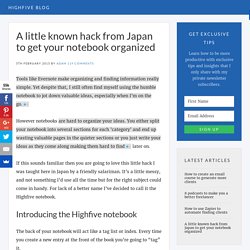
Yet despite that, I still often find myself using the humble notebook to jot down valuable ideas, especially when I’m on the go. However notebooks are hard to organize your ideas. You either split your notebook into several sections for each ‘category’ and end up wasting valuable pages in the quieter sections or you just write your ideas as they come along making them hard to find later on. Linda’s List of Official Tangle Patterns. Sampler of a few Zentangle-original Tangle Patterns.

Not all of the tangles created and introduced by Zentangle® originators Rick Roberts and Maria Thomas are posted online. This makes complete sense when you think about it because income from teaching about Zentangle is one aspect of their business. Learning about the original “102 Tangles” (now up to 154) and receiving instructions on how to teach them is part of the teacher certification seminar. (See this page for more about teaching Zentangle.) For those who are new to Zentangle, the Zentangle-original (aka “official”) tangles are those created and introduced by Zentangle HQ — that is to say patterns by Maria Thomas, Rick Roberts and Maria’s daughters Molly Hollibaugh “(pronounced: haul’-a’-baw’)” and Martha Huggins. Future Planning in the Bullet Journal. Future planning is often touted as one of the weak points of the Bullet Journal system.
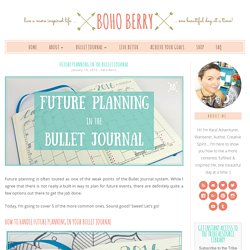
While I agree that there is not really a built-in way to plan for future events, there are definitely quite a few options out there to get the job done. Today, I’m going to cover 5 of the more common ones. Sound good? Bullet Journal Future Log: The Hope Method – Bullet Journal. I’d just like to take this opportunity to thank Ryder for sharing my Calendex system and thanks to everyone who has read, shared, reviewed and implemented it in their own bullet journal.
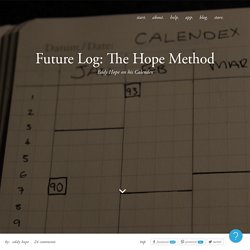
My analog journey all started around 2 years ago when I began to recognise my obsession with online methods to organise both my personal and professional life. I was using an increasing number of any and all new GTD systems and productivity apps constantly being distracted like some sort of magpie when it sees something shiny. So I decided to simplify my efforts, getting rid of unnecessary apps and focus on a new streamlined workflow based around an analog method aided by digital tools. So after hunting for blogs/videos/tips on using the age old technology (paper and pen) to manage aspects of my life I came across the Bullet Journal. Using A Bullet Journal at Work – Pretty Prints & Paper. Believe it or not, I hold it down with a full-time job (and then some, if you are a fellow teacher).

I am SO grateful that I re-discovered the bullet journal system last year because it has helped me keep on top of my shit at work. There don’t seem to be as many posts about how folks use the Bullet Journal for their “9-5” so I’ll share my current system. I did a Periscope about this, which you can catch here. My Complete {Illustrated} Guide to Bullet Journalling. - Cerries Mooney. As you'll be using your BuJo for probably at least a couple of months (depending on how much you use it), it makes sense to choose a notebook that can stand up to the strains of everyday life.
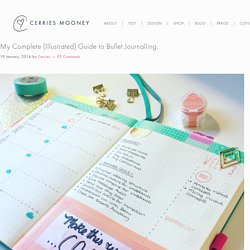
Size: Probably the most important thing to think about when it comes to choosing your BuJo notebook is size. Tiny Ray of Sunshine: Layout Idea: Weekly layouts. There are several kinds of weekly layouts that you will come across, here are some of them: Traditional weekly layouts have squares where you have only a small amount of room to write tasks, events and notes.
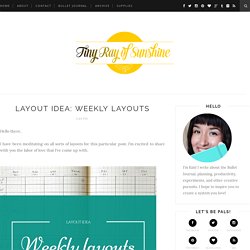
These are the most commonly found in regular planners. Time-based layouts are weekly layouts that have an emphasis on keeping track of time, so that you can visually see how your days are spread out. Bullet Journal — MK mix - Digitalt Entreprenörskap.